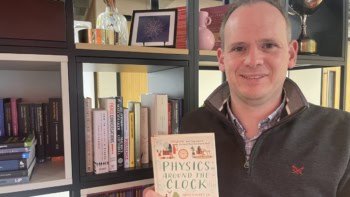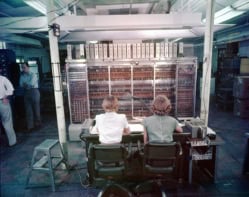The Scientist as Consultant
Carl Sinderman and Thomas Sawyer
1997 Plenum Press 340pp $29.95
Reviewed by Allan Newton
This is an interesting book that analyses the career options of scientists who become consultants, whether in a self-employed capacity or in a large consultancy firm. It is a book that surely must be required reading for scientists who are considering consultancy or thinking about setting up their own small high-tech business. The authors have a pleasant style, which makes the book easy to read, but they are clearly scientists first and authors second, for their material is based on thorough research that included a questionnaire and follow-up interviews with practising consultants.
The book does have some limitations, most of which are freely acknowledged by the authors. It is written by Americans and is largely based on the social, academic and industrial environment of the US. It also sticks very closely to its title of “the scientist as consultant” and seems largely to ignore the whole area of technology transfer and design. Surprisingly, the book also limits most of its examples to the biological and environmental sciences.
Although the first limitation is trivial – anyone can translate Americanisms such as CPA, attorney and IRS into their own language – the fact that the book concentrates on science and excludes entirely engineering and technology transfer applications is a much more serious drawback. Most UK physics consultants would probably agree that these are very fertile business areas, and in my own business they account for the bulk of my work. The authors also largely ignore alternative sources of income – such as writing books, giving training courses and selling high-value products – that many consultants take on as a sideline to their main business. It is a pity that these activities are hardly addressed, because many consultants find them technically and financially beneficial.
Where the book is strong is in its analysis of the various skills that are needed to manage a science-based business. Indeed, on this basis the book will be valuable reading for anyone who is running – or planning to run – such a firm. For example, the authors discuss the myriad of areas in which small businesspeople need skills that are peripheral to those of their core business, such as bookkeeping, sales and marketing. Although this material is quite standard, and can be found in many business textbooks, Sinderman and Sawyer depart from almost all other authors by actually questioning whether a business should expand or not.
From my experience, most textbooks, business advisers and indeed friends and family automatically assume that all businesspeople want to expand their businesses. Now this may be true for the person who is a businessman or woman first and a physicist, plumber or landscape gardener second. But most consultants are physicists first, and businesspeople only out of real necessity. If we do decide to expand our firms, it only increases the on-physics workload. And the reason why many of us set up a consultancy in the first place is precisely because we wanted to do more physics – not less. It is therefore very pleasant to read, as we do here, that being a sole proprietor is a valid business objective, and that many scientific consultants have decided to remain as sole proprietors. Expansion and growth are, of course, valid – but we need not feel ashamed for wanting to stay as solo operations.
The two areas in the book that are specific to high-technology consultancy and manufacturing businesses are ethics and the need to keep up to date with your subject. The whole ethical basis of consulting – particularly in the authors’ speciality of environmental science – can be highly problematic. For example, many customers who ask for “environmental impact” studies tend to know in advance what result they want. A developer usually wants a consultant to produce a report that concludes that the project in question will have no detrimental impact, while opponents of the project will want a report that predicts catastrophe. The consultant can therefore feel under pressure to deliver what the client wants, rather than a more factual analysis. One of the examples in the book shows a client who ignored one consultant and retained another, more well known consultant who delivered the desired result. The point is that a scientific consultant must satisfy three codes of practice and ethics simultaneously – those of the scientist, the businessperson and the independent consultant.
Keeping up with your subject – or continuing professional development (CPD) to sound more impressive – is a problem that most scientists and engineers encounter. For the one-person business it can be a difficult problem, as it is a long-term effect, and for so many of us, short-term problems are usually more pressing. (After all, if the short-term problems cannot be solved, then the long-term problems will be irrelevant!) And for older scientists, who see their businesses gradually tailing off as they drift into retirement, CPD hardly counts. But for younger scientists, who will have to stay at the front of their chosen field for perhaps 20 or 30 years, CPD is important. Attending meetings and conferences can, with some careful planning, be used to keep you abreast of your subject, and to make and maintain the network of contacts that are the essentials of marketing and selling consultancy services. In other words, CPD can meet both your short-term and long-term objectives.
The conclusion of the book is that for the right individual, consultancy can be an intellectually and financially rewarding career path. Like all career paths, it has its own attractions and its own pitfalls. In the UK, for example, there are probably more pitfalls as an independent consultant than as a salaried employee, but there are also many more attractions. This book will help you to decide whether a career as an independent physicist is the right one for you, and then help you along the road to success.
The messages from the book are also somewhat more widely applicable than I think the authors realize. If you are setting up a small technology-based business – be it consulting, design, technology transfer or manufacturing – then this book should be one of the first you read. It might even be an invaluable investment to give a copy to your bank manager, who may end up with a better understanding of your business.



